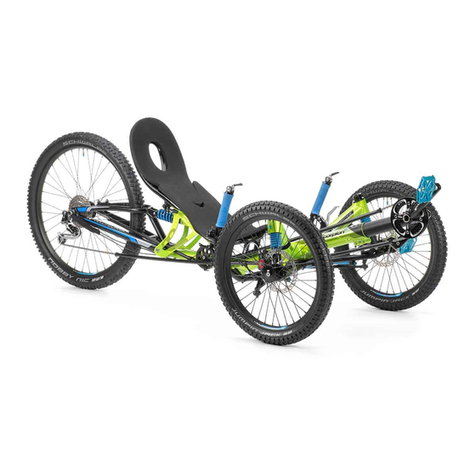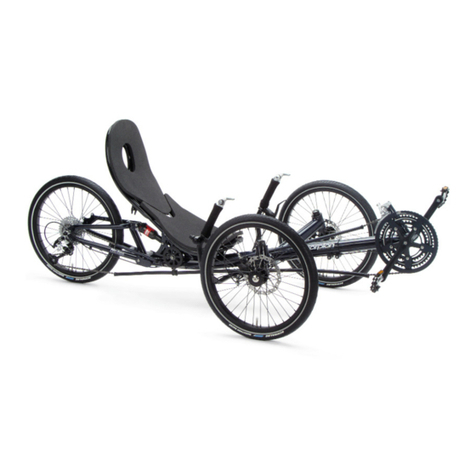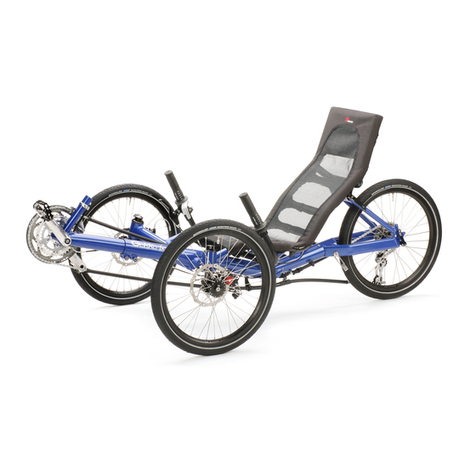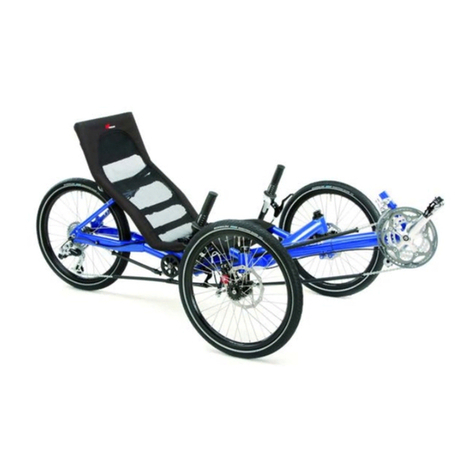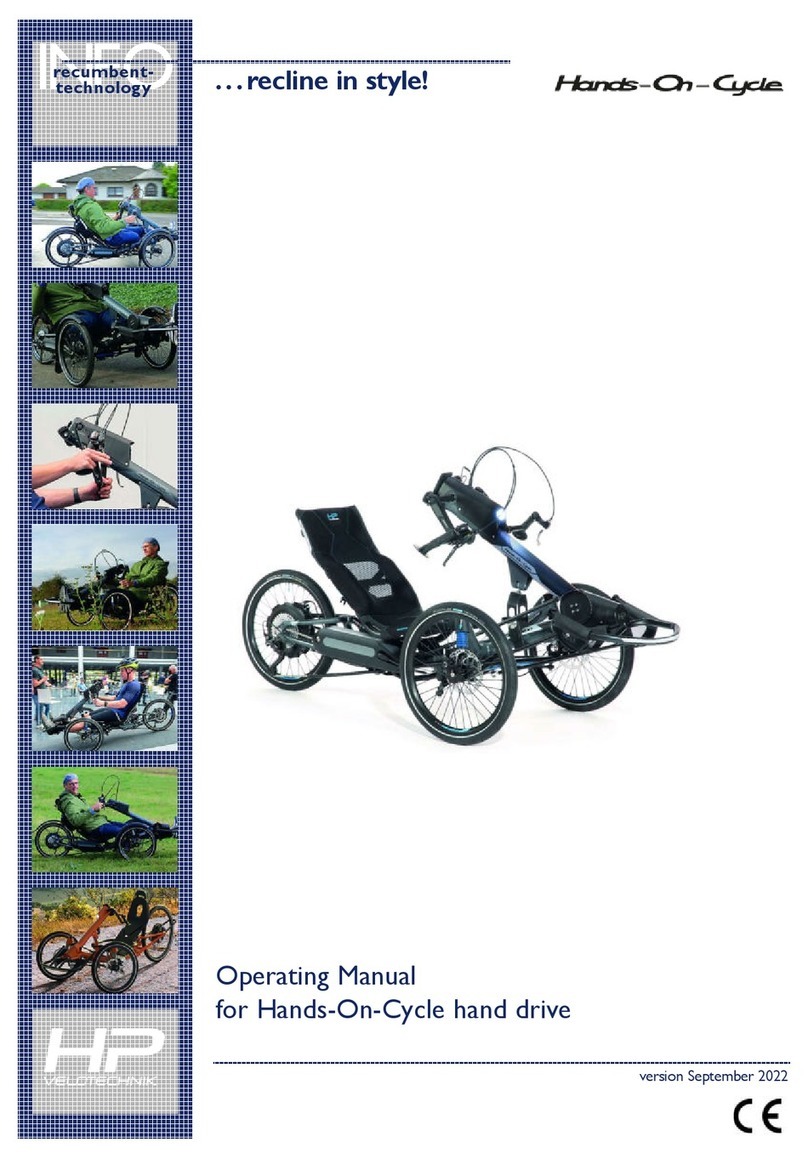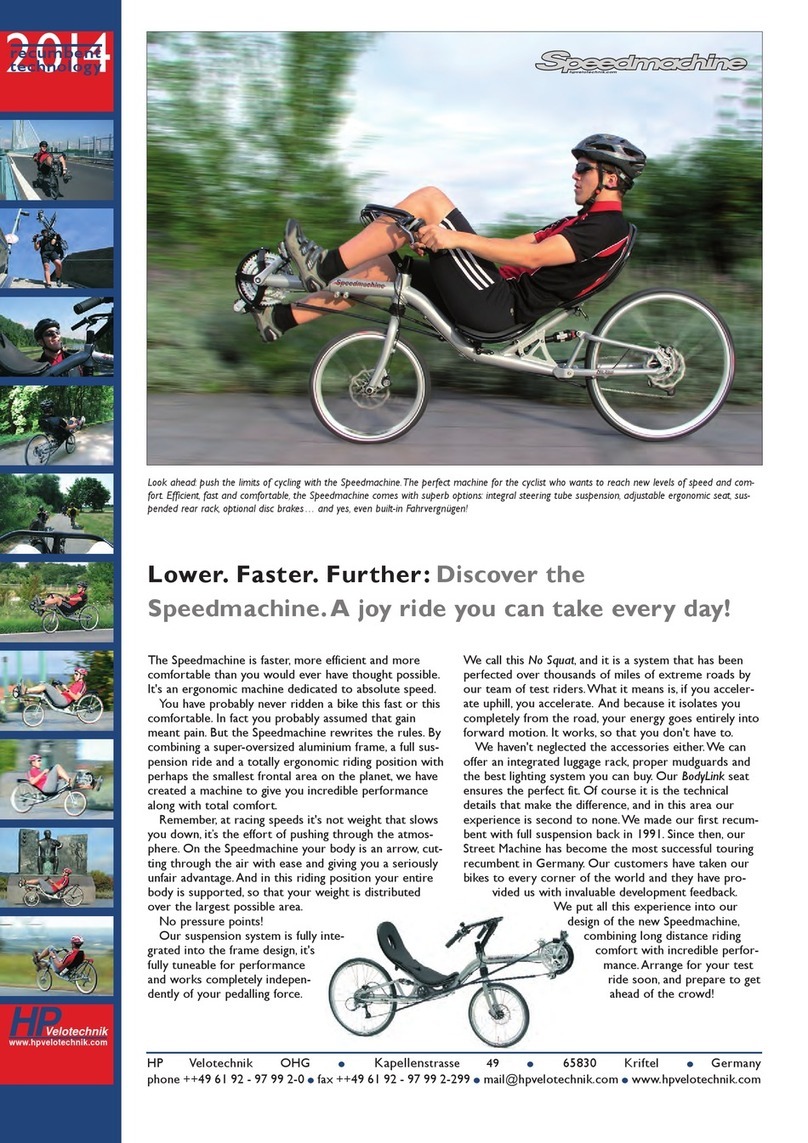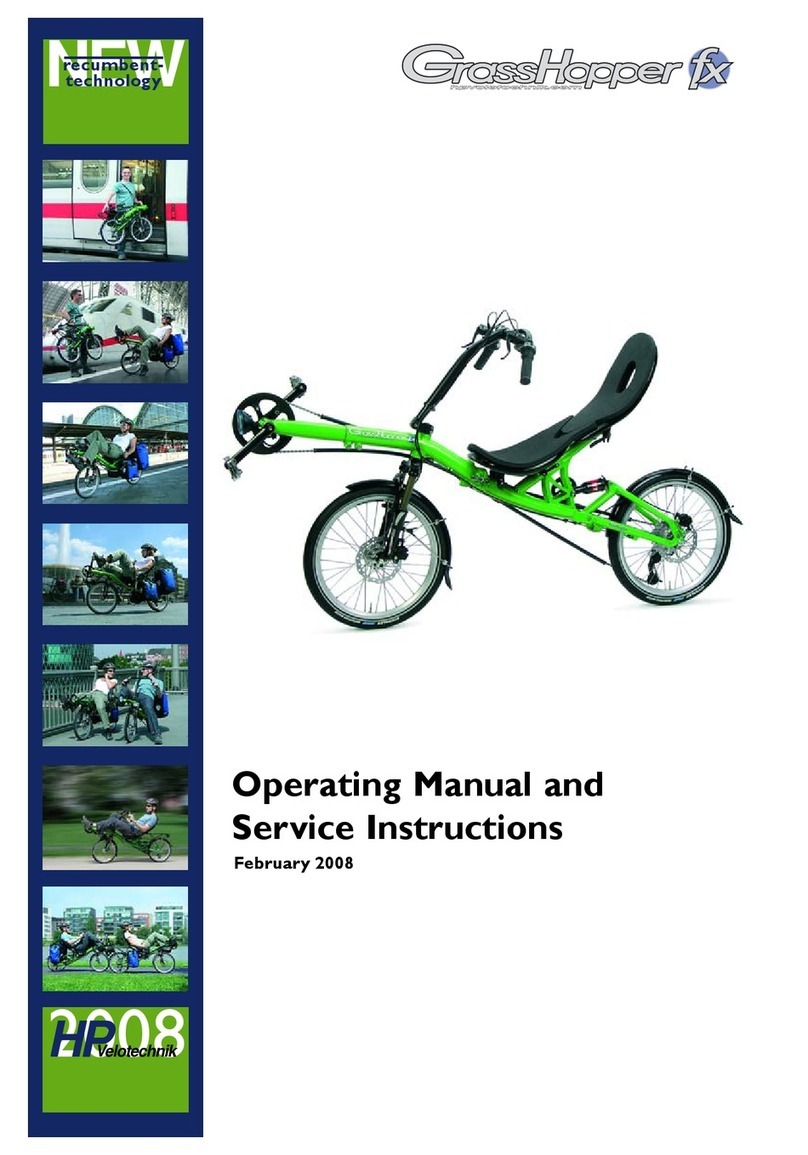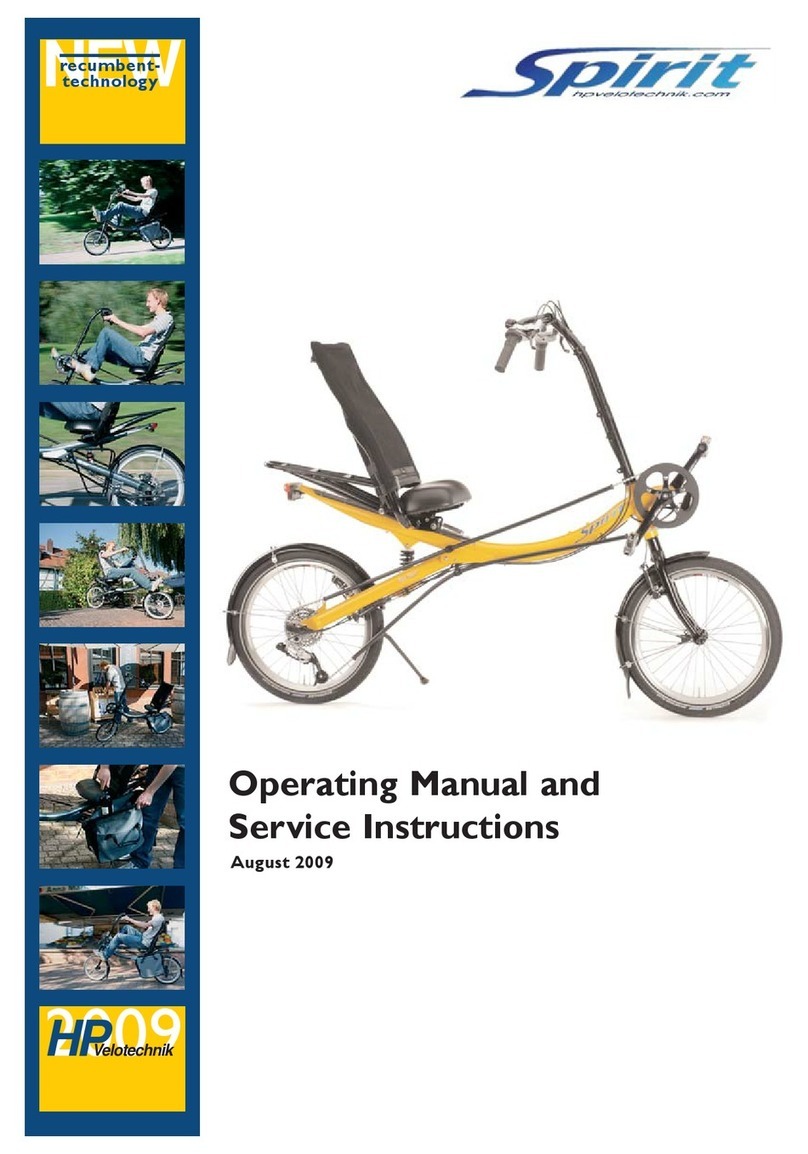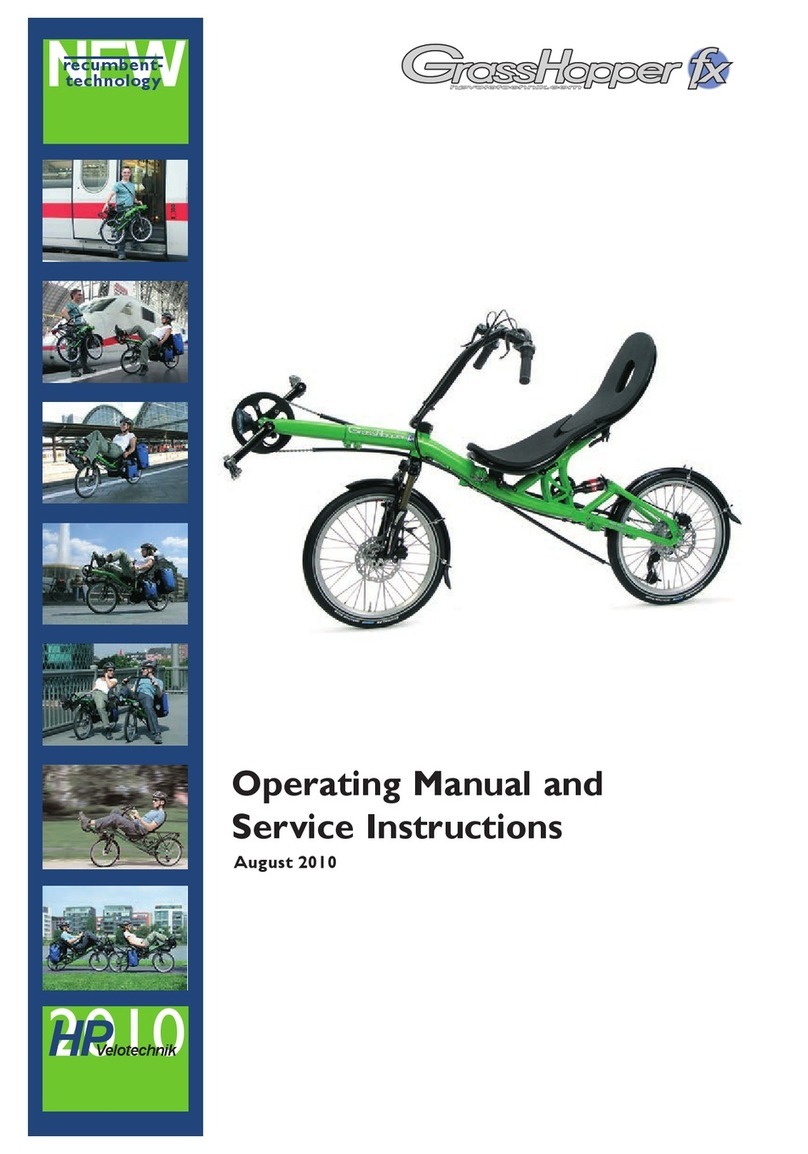
HP
Velotechnik 7
Bolts and nuts
Screws gradually settle in and hence they
can come loose.Therefore check the screws
regularly if they are tightened appropriately
with a torque wrench.
In the tables on page 74 and 75 you will nd
the prescribed tightening torques, they refer
to greased screws!
The grease also prevents your screws from
seizing in their threads so that they won‘t
unscrew anymore. In particular, screws
made of stainless steel are susceptible to
this and therefore have always to be put in
with grease.
Do use high quality acid free grease, if pos-
sible a lubricant with added solid particles
like Teon or MoS2. Their ingredients still
work properly after the thinner grease has
been removed from the contact surfaces.
Alternatively you can use thread locker e.g.
loctite, that you apply to the screw before
you put it into the thread.
Always check the screws very diligently for
signs of corrosion. Rust at the screw heads
may also lead to the screw seizing in the
thread.When the metallic and shiny coating
of galvanised screws comes off and discloses
dull, gray-brown steel you have to exchange
the screw.
When you exchange screws please only use
screws of the same type. Screws come in
different strength classes. Please only use
galvanised screws of the same type and
strength, corresponding to the German
strength class 8.8 or stainless steel screws
grade A2-70, when not given any other
recommendation. If you are in doubt please
ask your specialist dealer.
Quick release levers
Quick release levers hold wheels and seat in
position.A quick release lever consists of
two basic parts: the lever on one side pro-
vides the clamping force.With the adjusting
nut on the other side you adjust the clam-
ping tension on the screw thread.
To open the quick release, move the lever
away from the frame. In doing so the
inscription „open“ should be visible on the
lever.
To close the quick release, move the lever
with power in the other direction so that
the word „close“ is visible on the outward
side of the lever.
Attention! Screws must be
tightened with prescribed tightening torque.
In this manual tightening torques are given
in „Nm“ (Newton meter).Always use a
torque wrench wherever a torque setting is
given in this manual. Never rely on „feeling“.
Screws tightened too much or not enough
can break, which can lead to dangerous
accidents. In case you don‘t own a torque
wrench have your bicycle mechanic do the
respective work. You will nd tables with
the prescribed torque settings on page 88
and 89 in this manual.
General safety instructions
Safety instructions
Danger! An incompletely or im-
properly closed quick release can result in
parts coming loose and hence in a crash,
possibly resulting in serious injury.

